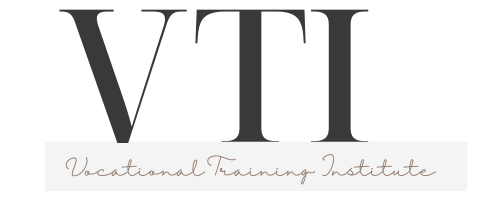Did you know that about 283,950 students are in vocational training in Finland? This shows that 85.1% of all VET students are there. Vocational training in Finland is a great chance for students from all over the world.
These programs focus on real-world skills and hands-on learning. Students get to experience different cultures while they learn. Plus, courses are taught in English, making it easier for students from other countries.
Key Takeaways
- Tuition-free vocational training courses make education accessible.
- Programs are conducted in English to enhance international student participation.
- The application deadline for vocational courses is March 19, 2024.
- To apply, candidates need a High School Diploma and English fluency.
- Finland’s family-friendly policies support spouses and children of international students.
Understanding Vocational Education in Finland
Vocational education in Finland is highly valued, on par with general education. About 68% of upper secondary students choose this path, much higher than the OECD’s 44%. These programs are for everyone, including adults wanting to boost their skills. They offer the chance to learn important skills needed in the job market.
Students in vocational schools in Finland are often around 28 years old. This is older than students in other OECD countries, who are usually 21. This shows that Finnish vocational education welcomes both young and adult learners.
After finishing these programs, most graduates find jobs, with a 79% employment rate among those 25 to 34 years old. This is a bit lower than in some Nordic countries and the EU, but still shows how well vocational education prepares students for work.
Vocational education in Finland is more than just getting a certificate. It’s a way to keep learning and staying adaptable. With more older people and a need for skilled workers in areas like health, vocational training is key to meeting these needs.
| Statistic | Finland | OECD Average |
|---|---|---|
| Percentage of upper secondary students in vocational education | 68% | 44% |
| Average age of vocational education students | 28 years | 21 years |
| Employment rate of VET graduates (ages 20-34) | 79.8% | N/A |
Benefits of Vocational Training in Finland
Vocational training in Finland has many advantages. It helps students succeed in different areas. Students get free tuition, making it open to more people. It also helps them learn from different cultures, important in today’s world.
These programs focus on vocational skills training in Finland. They teach skills needed in the job market. Many courses include work placements for real-world learning. This helps students get ready for their careers.
Finland values lifelong learning. It helps graduates stay ahead by keeping up with new trends. The system supports students well, helping them do their best in school.
Those who finish vocational training have good job chances. There are many fields to choose from, like health, tech, and social sciences. This variety meets the economy’s needs. It makes individuals more skilled and employers happy with their employees.
Vocational Training in Finland: An Overview
Vocational training in Finland combines practical skills with theory. It prepares students for real-world jobs. The system offers programs for many industries, making sure graduates are ready for the job market.
This training lasts three years and includes at least six months of practical work. This helps students easily move from school to work. It’s especially useful in fields like health care and social services, where jobs are in high demand.
By 2018, 79.8% of VET graduates aged 20-34 were employed. This shows how effective the training is. In 2016/17, only 7.4% of students dropped out, showing strong support for students.
Finland simplified its qualifications in 2017-18, cutting them from 360 to 164. This change helps match training with the needs of the job market. It ensures high-quality vocational programs.
Finland values lifelong learning, offering many training options. This lets people improve their skills over time. Personalized plans help students track their progress.
In summary, Finland’s vocational training is all about quality and preparing students for various careers. It shows Finland’s dedication to education and career readiness.
Types of Vocational Programs in Finland
Finland has a wide range of vocational programs for different careers. About 341,600 students join these programs after finishing primary school. These courses are great for developing skills and specializing in a field. Let’s look at some main areas where students can focus their studies.
Culinary Arts
Culinary arts training in Finland is thorough. Students get hands-on experience in food preparation, presentation, and managing kitchens. The focus is on creativity, efficiency, and high culinary standards. After graduating, students often work in restaurants, hotels, or catering services. Many become chefs or food service managers.
Business Studies
Business studies in Finland prepare students for the business world. The course covers management, finance, marketing, and entrepreneurship. Students learn from experts, do internships, and work on real projects. This makes them more employable. Graduates work in retail, corporate offices, and non-profits.
Travel and Tourism
Tourism programs give students a deep look into the travel industry. They learn about management, customer service, and sustainable tourism. With more people traveling, there’s a big need for skilled workers. Students get practical training and learn about different cultures. This prepares them for careers in travel agencies, event planning, and hotel management.
Eligibility Criteria for Vocational Courses
To get into vocational courses in Finland, you need to meet certain educational and language standards. These rules make sure students are ready for their training and can do well in their chosen areas.
Educational Requirements
In Finland, there are clear educational needs for vocational courses. You must provide important documents like:
- Degree or qualification certificates
- Transcripts of studies
- Proof of nationality
- Documents for name change verification if applicable
The Finnish National Agency for Education sets the rules for vocational qualifications. If you’re from the EU/EEA, you might need to show proof of work experience and learning over time. It usually takes 2 to 3 months to check if you’re eligible after you send in all your documents.
Language Proficiency
Knowing English well is key for vocational training. You’ll be tested on your English skills, possibly through an exam or an interview. Knowing Finnish is also important, at a certain level.
The deadline to apply for vocational training for 2024 is from April 2 to May 31, 2024. You can apply until August 12, 2024, too. Classes start on October 7, 2024, and last two years. You might need to go to an interview, where they look at your past experience and why you want to study.
How to Apply for Vocational Programs in Finland
Applying for vocational programs in Finland is easy and opens many doors for students from around the world. You start by filling out an online form. You’ll need to send in things like your school records, language test scores, and a letter explaining why you want to study.
This is great for those looking at the many tuition-free courses application options. It’s a chance to get a good education without paying fees.
Students can apply for vocational programs in two ways: a joint application or a continuous one. The continuous option lets you apply at any time. But, remember, each course has its own deadline for signing up.
International students, especially those from the EU, love Finland’s vocational education because it’s free. Students from places like Vietnam or Nigeria can also find programs that fit their needs. These programs are often in English or Finnish and might cost money.
Some health care and social care programs need you to meet health requirements. If English isn’t your first language, you might need to pass a language test. Knowing some Finnish can really help, as many programs include work experience. This makes speaking Finnish important for doing well.
Learning how to apply for applying for vocational programs in Finland makes the process smoother. It also opens up many educational chances that match your career goals. So, start your application now and take the first step towards your future!
The Role of Vocational Training Providers in Finland
Vocational training providers in Finland are key in the education scene. They focus on quality education that matches industry needs. These providers focus on practical training and skills, preparing students for their careers.
Educators in these places are very important. They give students personal guidance and support. This makes learning effective.
Working together with industry is a big part of what these providers do. They make sure their courses meet the labor market’s needs. This makes students ready for jobs with the skills they need.
They offer different programs, for both young and adult learners. This includes both qualification and non-qualification apprenticeships.
Finland’s adult education system is strong, thanks to vocational training. These programs are flexible, letting students learn at their own pace. They can study through work, schools, or online.
This means graduates get skills that employers like. They are ready for the job market.
| Vocational Training Aspects | Details |
|---|---|
| Duration of Programs | Approximately three years for vocational upper secondary qualifications |
| Apprentice Wages | Around 80% of a skilled worker’s wages in the same field |
| Accredited Polytechnics | 29, with 18 managed by local authorities or joint municipal boards |
| Dropout Rate | 7.4% for vocational education during the 2016/17 school year |
| Employment Rate of VET Graduates | 79.8% for ages 20-34 in 2018 |
Vocational training providers in Finland prepare a skilled workforce. They work closely with industry and keep high educational standards. This helps shape the future of education and jobs in Finland.
Support Services for International Students
Finland is committed to helping international students succeed in their studies. They offer a range of support services for international students to make their stay successful. These services include help with schoolwork and counseling, language support, and more.
Students can bring their families along, thanks to family-friendly policies. This creates a supportive community. Family members can work full-time, and kids get free education, making the experience richer for families.
There’s more to support than just school help. Programs introduce students to Finnish culture and the community. They go on trips to places like Nuuksio and central Helsinki. This helps students connect with their new home and make friends.
The following table highlights key support services for international students in Finland:
| Service Type | Description | Benefits |
|---|---|---|
| Academic Guidance | Access to mentors and academic advisors | Enhanced study techniques and personalized support |
| Counseling Services | Emotional and mental health resources | Stress management and coping strategies |
| Language Support | Courses and workshops for language improvement | Better integration and communication |
| Social Activities | Organized trips and events | Opportunity to socialize and network |
| Family Support | Inclusion of family in students’ visa applications | Work opportunities for spouses and free education for children |
Finland offers a wide range of support services for international students. These services help students do well in school and personally. This makes Finland a great place for international students to study.
How Vocational Training Enhances Employment Opportunities
In Finland, vocational training and employment are closely linked. Over 50% of young people choose vocational training, showing a big interest in skills-based education. This choice is competitive, with a 70% success rate in getting into vocational programs. This is much higher than the 94% success rate for general education.
Vocational training in Finland meets the needs of the job market. It offers training to about 10,000 students, with many programs including on-the-job training. This approach helps students build important networks and gain practical skills. These skills improve their career chances through vocational training. In fact, 67.8% of graduates find jobs or go on to further education within four months thanks to programs like the Youth Guarantee.
Countries like Germany and Switzerland show that focusing on vocational education leads to low youth unemployment. In Finland, 80% of people aged 25-34 with vocational qualifications are employed. This is much higher than the 69% employment rate for those with general qualifications. This shows that vocational training prepares people well for the job market and supports their career growth.
Finland is investing in its education system, including vocational and general schools. This focus on lifelong learning helps workers keep up with job market changes. It also improves their job prospects and career paths.
| Statistic | Details |
|---|---|
| Enrollment Rate in Vocational Programs | 50% of students, higher than OECD average (32%) |
| Youth Unemployment Rate (2013) | 19.9% |
| Successful Employment Rate via Youth Guarantee (4 months) | 67.8% |
| Successful Employment Rate via Youth Guarantee (6 months) | 89.6% |
| Employment Rate with Vocational Education (25-34 years) | 80% |
Conclusion
Vocational training in Finland is a key chance for people to get quality education and boost their career chances. About 40% of students after finishing school choose vocational training. This shows how popular and valuable vocational education is becoming.
Since the 1990s, big changes have made learning more flexible. This makes it easier for students to find a program that fits their needs. It’s now a top choice for those looking for education.
Also, new universities of applied sciences have opened up more study paths for those with vocational skills. This makes it easy for them to keep learning. Students in vocational training in Finland get to follow their interests and gain important skills for the job market.
In short, vocational education in Finland is full of learning options and career opportunities. It’s a great way for students to start their careers. By choosing this path, students can reach their goals and have successful careers.
Source Links
- Unlocking Opportunities: Vocational Training in Finland for International Students
- Organisation of vocational upper secondary education and training
- Education at a Glance: Vocational education and training is more popular in Finland than in other OECD countries – Finnish Government
- VET in Europe database | Vocational education and training in Europe | Finland | CEDEFOP
- Vocational education and training
- Microsoft Word – 5171 EN text.doc
- FE leaders visit Finland to explore and learn from the country’s approach to vocational education and training – ColegauCymru
- Vocational Schools in Finland for International Students 2024 | Leverage Edu
- Upper secondary school and vocational education and training in Finland
- Qualification of teacher in vocational education and training – Suomi.fi
- Vocational Qualification in Tourism Industry | OSAO
- Applying for education and training
- How to apply – TAKK
- How to apply – Sedu
- Financial help while studying
- Vocational Schools – Finland Startup Visa & Company Registration In Finland
- Gaining international experience in Finland
- Vocational education: why the Finns do it best
- Finland case study in training and the world of work
- IJRVETv1n22014LMFinnish.pdf


